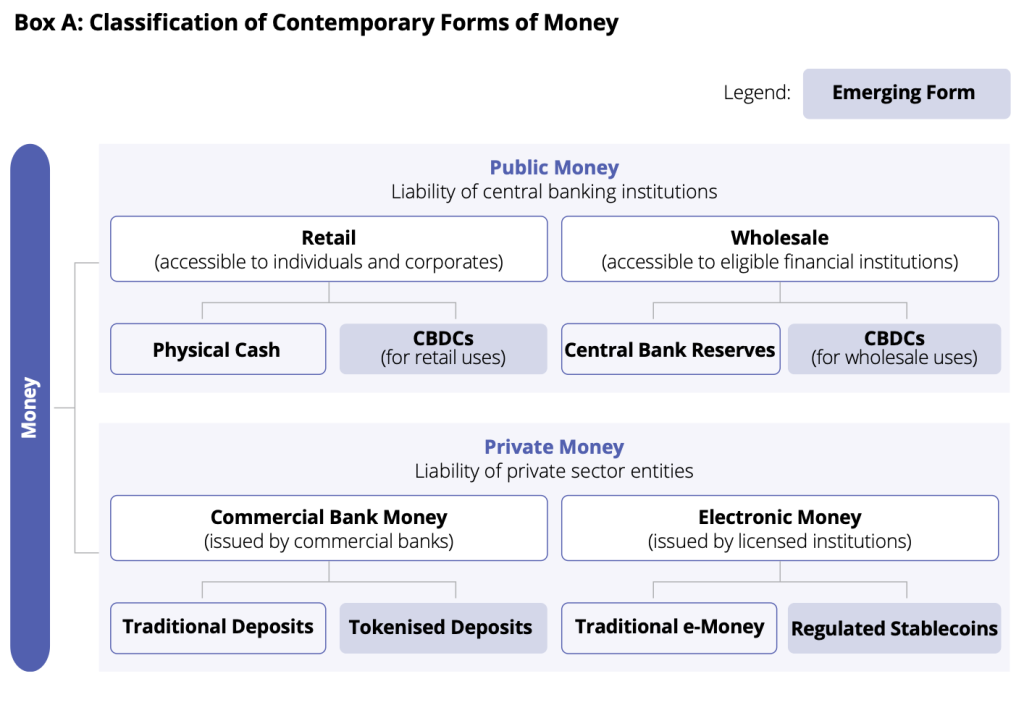The Hong Kong Monetary Authority (HKMA), with analytical support from Deloitte, has released its e-HKD Pilot Programme Phase 2 Report, offering a look into how central bank digital currencies (CBDCs) and other digital money forms could reshape the city’s financial ecosystem.
The report shows a pivotal transition — from physical cash to digital money powered by distributed ledger technology (DLT) — and outlines how Hong Kong is positioning itself as a global leader in digital finance, tokenisation, and next-generation payments infrastructure.
Expanding the Digital Money Landscape
According to the HKMA report, the digital money landscape is evolving into two main categories: public money and private money. Public money includes central bank digital currencies like the e-HKD, while private money encompasses tokenised deposits and regulated stablecoins.
These innovations are building the foundation for tokenisation in Hong Kong, enabling faster, more transparent, and programmable transactions that connect traditional finance with the emerging Web3 ecosystem.
The HKMA has been researching the e-HKD since 2017, conducting pilot studies and technical experiments to explore its potential in both wholesale and retail settings.
With Phase 2, the focus broadened to include comparisons between the e-HKD and private forms of digital money, evaluating their usability, scalability, and commercial viability.
Key Themes and Findings
The Phase 2 pilots, conducted with 11 industry partners across the banking, payments, and technology sectors, explored three central themes:
Settlement of Tokenised Assets: Pilots tested the use of a hypothetical e-HKD for atomic settlement of tokenised assets such as money market funds and bonds.
Results showed that DLT-based settlement could shorten cycles from T+2 to T+0, improving liquidity and reducing counterparty risk. However, banks indicated that tokenised deposits might offer similar efficiency with fewer infrastructure changes.
Programmability: The report examined the potential of programmable payments using smart contracts and purpose-bound money (PBM). Pilot use cases included green reward vouchers, escrow-based prepayments, and supply chain financing.
While programmability enhances automation and transparency, the HKMA found that commercial adoption models remain limited, with no clear business case for large-scale rollout.
Offline Payments; Offline e-HKD pilots explored Super SIM and NFC-based payments that operate without internet connectivity. Given Hong Kong’s robust digital infrastructure and existing offline payment systems, the HKMA concluded that an offline e-HKD would likely add limited incremental benefit at present.
The Road Ahead
The HKMA, supported by Deloitte’s analysis, will prioritise wholesale use cases for the e-HKD, particularly in the settlement of tokenised assets and interbank transactions.
The central bank will continue to assess retail applications while laying the policy, legal, and technical groundwork to ensure readiness by 2026.

As the global race toward digital money intensifies, Hong Kong’s collaborative approach — combining public oversight with private innovation — positions it at the forefront of financial transformation. The e-HKD initiative reflects not just the city’s commitment to technological advancement, but also its strategic role in shaping the next era of money — connected, efficient, and inclusive.
The post Hong Kong Advances Digital Money Strategy as HKMA’s e-HKD Pilot Programme Enters Phase Two appeared first on Cryptonews.

